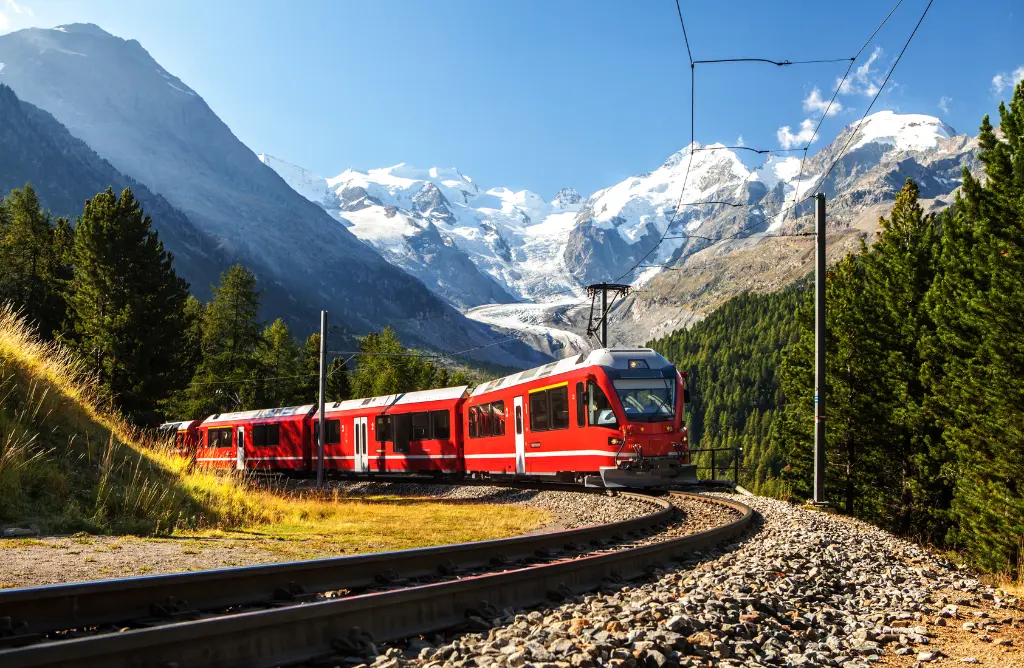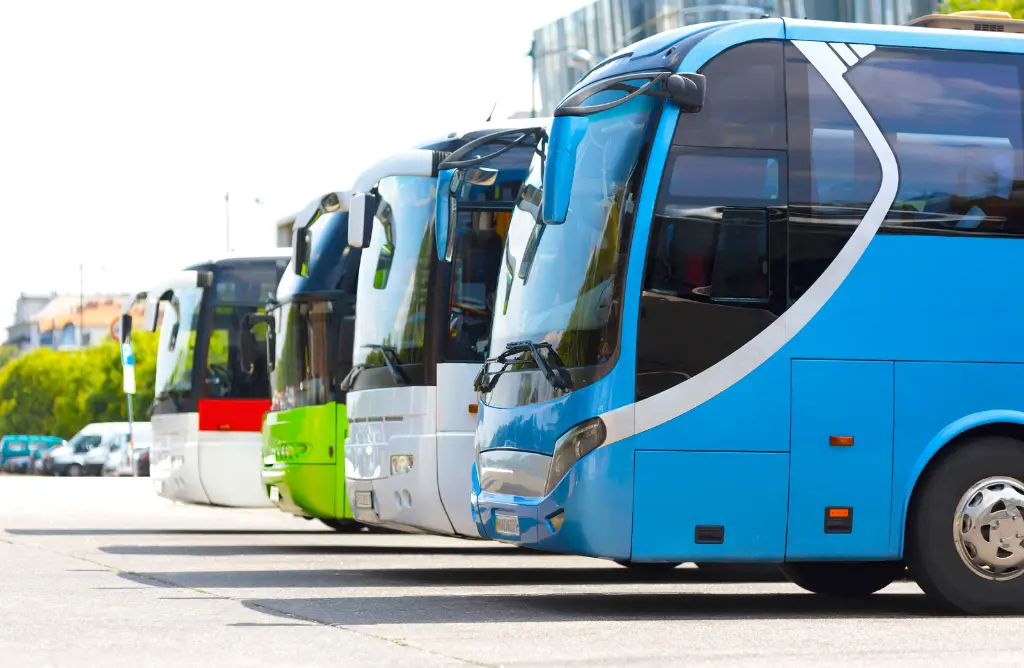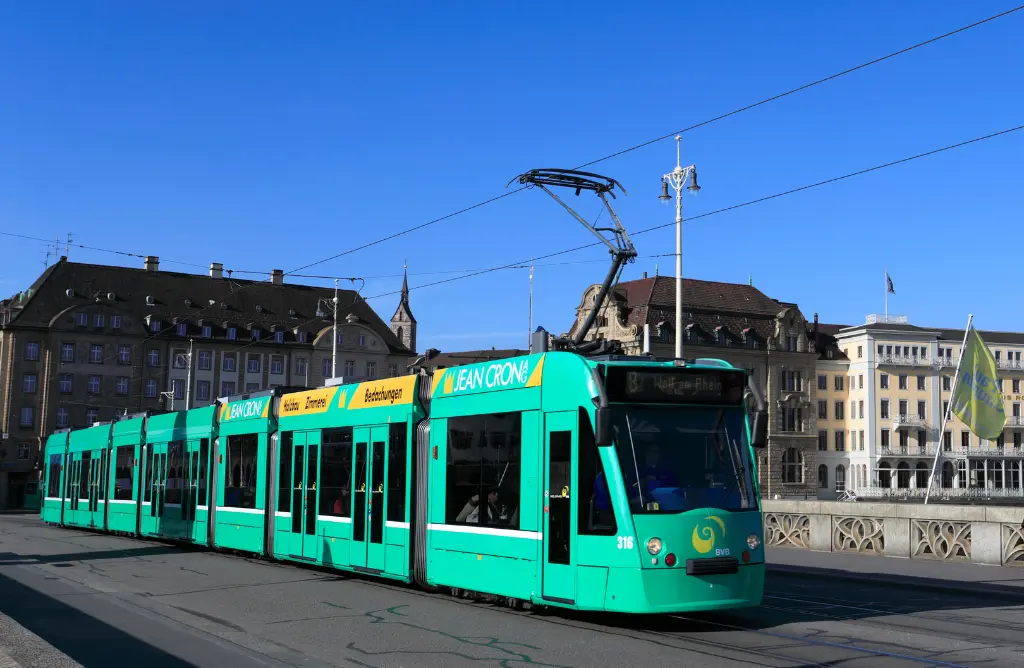Public transportation system of Switzerland is impressive. With over 5,300 kilometers (3,300 miles) of railway tracks and approximately 29,000 kilometers (18,000 miles) of combined trains, buses, and PostAuto lines, it efficiently connects residents and visitors alike. Whether you’re traveling from Vancouver to Halifax or exploring the Swiss Alps, their extensive network has you covered. The public transport system of Switzerland is very useful for travellers. Call +971-4256-2434 to book our exclusive Switzerland tour packages from Dubai and enjoy public transport in Switzerland.
Means of public transport in Switzerland
Trains in Switzerland
Switzerland stands out as a country of superlatives when it comes to trains. In 2019, Swiss trains covered an impressive 2,400 kilometers (1,500 miles), surpassing other European nations.
One of their proudest achievements is the Gotthard Base Tunnel, the world’s longest railway tunnel. Stretching 57 kilometers (35 miles), it significantly reduced travel time between Zurich and the Canton of Ticino by 30 minutes (a 20% improvement).
Trains are undeniably the fastest and most convenient way to navigate Switzerland. If you glance at the map, you’ll notice the red lines crisscrossing the country—these represent the railway lines served by Intercity, Interregio, Regio, suburban trains, and mountain railways.
The major train company, known as SBB (CFF in French and FFS in Italian), operates this extensive network. Beyond SBB, over 70 additional railway companies contribute to Switzerland’s dense rail system.

Long distance buses in Switzerland
In Switzerland, long-distance buses aren’t as common as trains. However, bus companies have expanded their services across Europe, making it possible to travel within Switzerland by bus. Here are some key points:
- Availability: While trains run frequently (several times per hour) between major cities, buses operate less frequently (only a couple of times per day).
- Travel Time: Buses take longer to reach their destinations compared to trains. They move more slowly and can get stuck in traffic.
- Ticket Limitations: When you buy a bus ticket, you’re tied to a specific service. Unlike trains, you can’t spontaneously change your travel time.
City Buses in Switzerland
In addition to Postautos, cities and certain bigger villages also have their own local bus network. You can find a list of all local bus lines on this website.
City buses often run quite frequently. Especially in larger cities. Depending on the size of the city and the time of day, you’ll see anything between 30-minute down to two-minute intervals.

Trams in Switzerland
Trams aren’t widely spread in Switzerland, and the only cities with notable tram networks are Zurich, Basel, Bern, and Geneva. Trams connect cities and their suburbs to the center, often running as frequently as every two minutes. In Basel, there’s even a tram that crosses the border to Weil am Rhein in Germany. A friendly word of caution: trams can be assertive creatures, so keep an eye out for them in city centers. They seem to prefer honking over braking.

Passenger ships in Switzerland
Switzerland’s lakes and rivers make passenger ships a convenient way to travel. Wherever you see a white line on the map, there’s a passenger ship or ferry available.
Keep in mind that these ships are slower than other forms of public transport, so commuters tend to avoid them. If you’re in a rush, consider skipping the ship.
However, if you have time and want to enjoy scenic views or even take a steamboat ride, check out this website for more information.
During sunny summer days, the ships can get crowded. While I’ve never seen them turn people away, arriving a few minutes early at the pier is a good idea.
Remember that schedules vary throughout the year, so always double-check departure times before your cruise.

Tickets are flexible and never sell out
Cable cars in Switzerland aren’t part of the public transport Switzerland and don’t receive government funding. They’re represented on the map as black lines.
To ride a cable car, you typically need to purchase an additional ticket, which can be expensive.
However, many cable cars accept common travel passes. If you have one, be sure to show it when boarding.
Have your ticket when you get on
When you’re on a train, make sure you have a valid ticket with you. Some trains allow you to buy a ticket or a switzerland transport pass from the conductor, but I recommend doing so only in emergencies because it costs extra.
If you encounter the sign below, it means you can’t purchase a ticket on the train, and you’ll be fined 100 CHF if caught without one.
For buses and Postautos (postal buses), the process is different. You can buy a ticket on board, either from a ticket machine or directly from the driver.
Call +971-4256-2434 to book our exclusive Switzerland tour packages and enjoy your trip.




… [Trackback]
[…] Read More Info here to that Topic: thetravelmakers.ae/blogs/public-transport-system-of-switzerland/ […]
… [Trackback]
[…] Find More to that Topic: thetravelmakers.ae/blogs/public-transport-system-of-switzerland/ […]
… [Trackback]
[…] Find More on that Topic: thetravelmakers.ae/blogs/public-transport-system-of-switzerland/ […]
… [Trackback]
[…] Read More on that Topic: thetravelmakers.ae/blogs/public-transport-system-of-switzerland/ […]
… [Trackback]
[…] Read More on that Topic: thetravelmakers.ae/blogs/public-transport-system-of-switzerland/ […]
… [Trackback]
[…] Here you can find 53584 more Information to that Topic: thetravelmakers.ae/blogs/public-transport-system-of-switzerland/ […]
… [Trackback]
[…] There you can find 44902 more Information on that Topic: thetravelmakers.ae/blogs/public-transport-system-of-switzerland/ […]
… [Trackback]
[…] Find More on to that Topic: thetravelmakers.ae/blogs/public-transport-system-of-switzerland/ […]
… [Trackback]
[…] Read More Info here on that Topic: thetravelmakers.ae/blogs/public-transport-system-of-switzerland/ […]
… [Trackback]
[…] Here you can find 22720 more Information on that Topic: thetravelmakers.ae/blogs/public-transport-system-of-switzerland/ […]
… [Trackback]
[…] There you can find 44107 additional Information on that Topic: thetravelmakers.ae/blogs/public-transport-system-of-switzerland/ […]
… [Trackback]
[…] Read More on that Topic: thetravelmakers.ae/blogs/public-transport-system-of-switzerland/ […]
… [Trackback]
[…] Find More to that Topic: thetravelmakers.ae/blogs/public-transport-system-of-switzerland/ […]
… [Trackback]
[…] Read More Information here to that Topic: thetravelmakers.ae/blogs/public-transport-system-of-switzerland/ […]
… [Trackback]
[…] Read More on to that Topic: thetravelmakers.ae/blogs/public-transport-system-of-switzerland/ […]
… [Trackback]
[…] Info on that Topic: thetravelmakers.ae/blogs/public-transport-system-of-switzerland/ […]
… [Trackback]
[…] Find More on on that Topic: thetravelmakers.ae/blogs/public-transport-system-of-switzerland/ […]
… [Trackback]
[…] Find More to that Topic: thetravelmakers.ae/blogs/public-transport-system-of-switzerland/ […]
… [Trackback]
[…] Read More to that Topic: thetravelmakers.ae/blogs/public-transport-system-of-switzerland/ […]
… [Trackback]
[…] Read More on to that Topic: thetravelmakers.ae/blogs/public-transport-system-of-switzerland/ […]
… [Trackback]
[…] Read More here on that Topic: thetravelmakers.ae/blogs/public-transport-system-of-switzerland/ […]
… [Trackback]
[…] Find More on that Topic: thetravelmakers.ae/blogs/public-transport-system-of-switzerland/ […]
… [Trackback]
[…] Here you will find 86481 more Information on that Topic: thetravelmakers.ae/blogs/public-transport-system-of-switzerland/ […]
… [Trackback]
[…] Information to that Topic: thetravelmakers.ae/blogs/public-transport-system-of-switzerland/ […]
… [Trackback]
[…] There you will find 63674 additional Information on that Topic: thetravelmakers.ae/blogs/public-transport-system-of-switzerland/ […]
… [Trackback]
[…] Find More here to that Topic: thetravelmakers.ae/blogs/public-transport-system-of-switzerland/ […]
… [Trackback]
[…] There you can find 77368 additional Info on that Topic: thetravelmakers.ae/blogs/public-transport-system-of-switzerland/ […]
… [Trackback]
[…] Read More Info here on that Topic: thetravelmakers.ae/blogs/public-transport-system-of-switzerland/ […]
… [Trackback]
[…] Find More Info here to that Topic: thetravelmakers.ae/blogs/public-transport-system-of-switzerland/ […]
… [Trackback]
[…] Find More Information here on that Topic: thetravelmakers.ae/blogs/public-transport-system-of-switzerland/ […]
… [Trackback]
[…] Find More here to that Topic: thetravelmakers.ae/blogs/public-transport-system-of-switzerland/ […]
… [Trackback]
[…] Read More to that Topic: thetravelmakers.ae/blogs/public-transport-system-of-switzerland/ […]
… [Trackback]
[…] Info on that Topic: thetravelmakers.ae/blogs/public-transport-system-of-switzerland/ […]
… [Trackback]
[…] Read More Info here on that Topic: thetravelmakers.ae/blogs/public-transport-system-of-switzerland/ […]
… [Trackback]
[…] Find More on to that Topic: thetravelmakers.ae/blogs/public-transport-system-of-switzerland/ […]